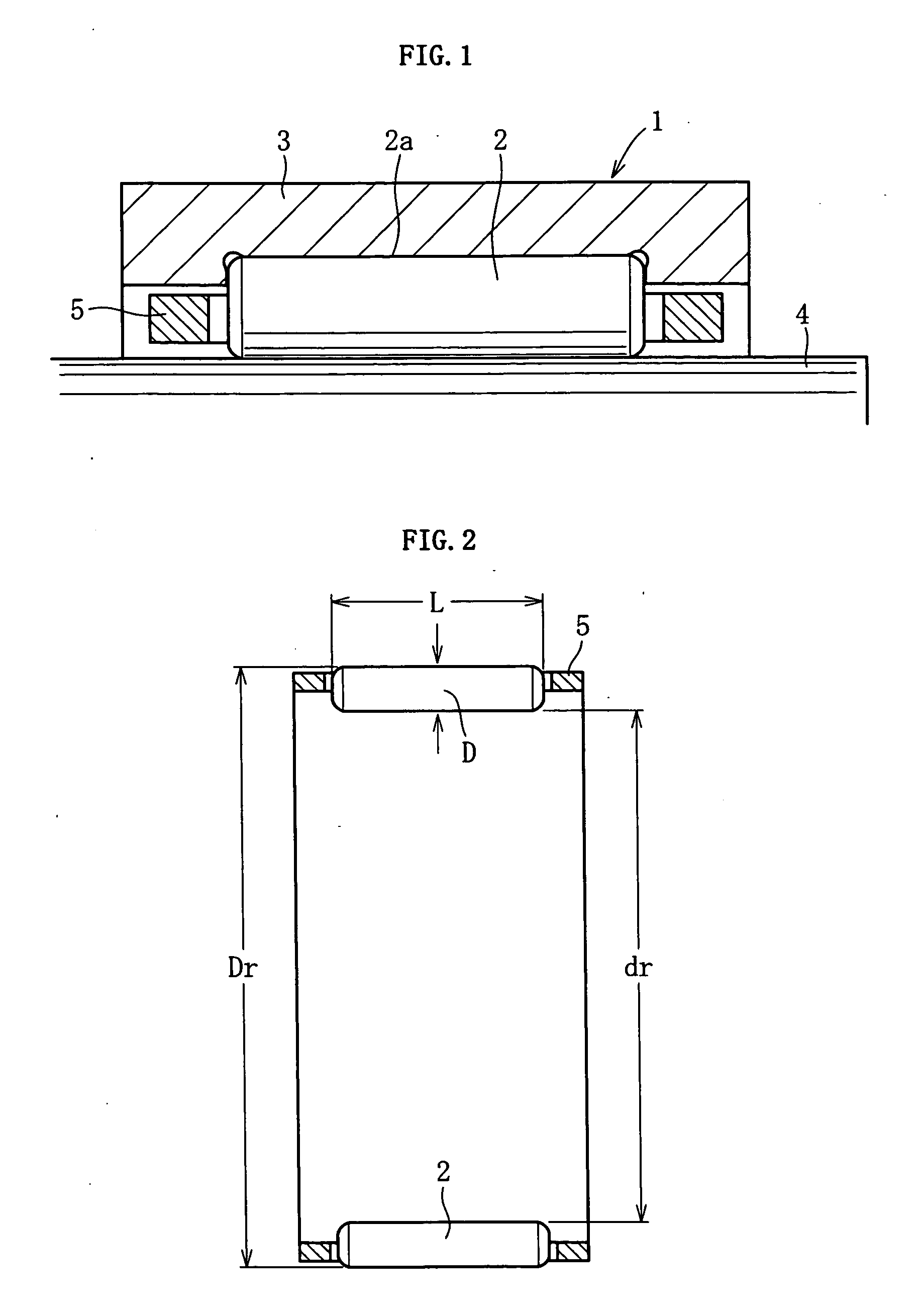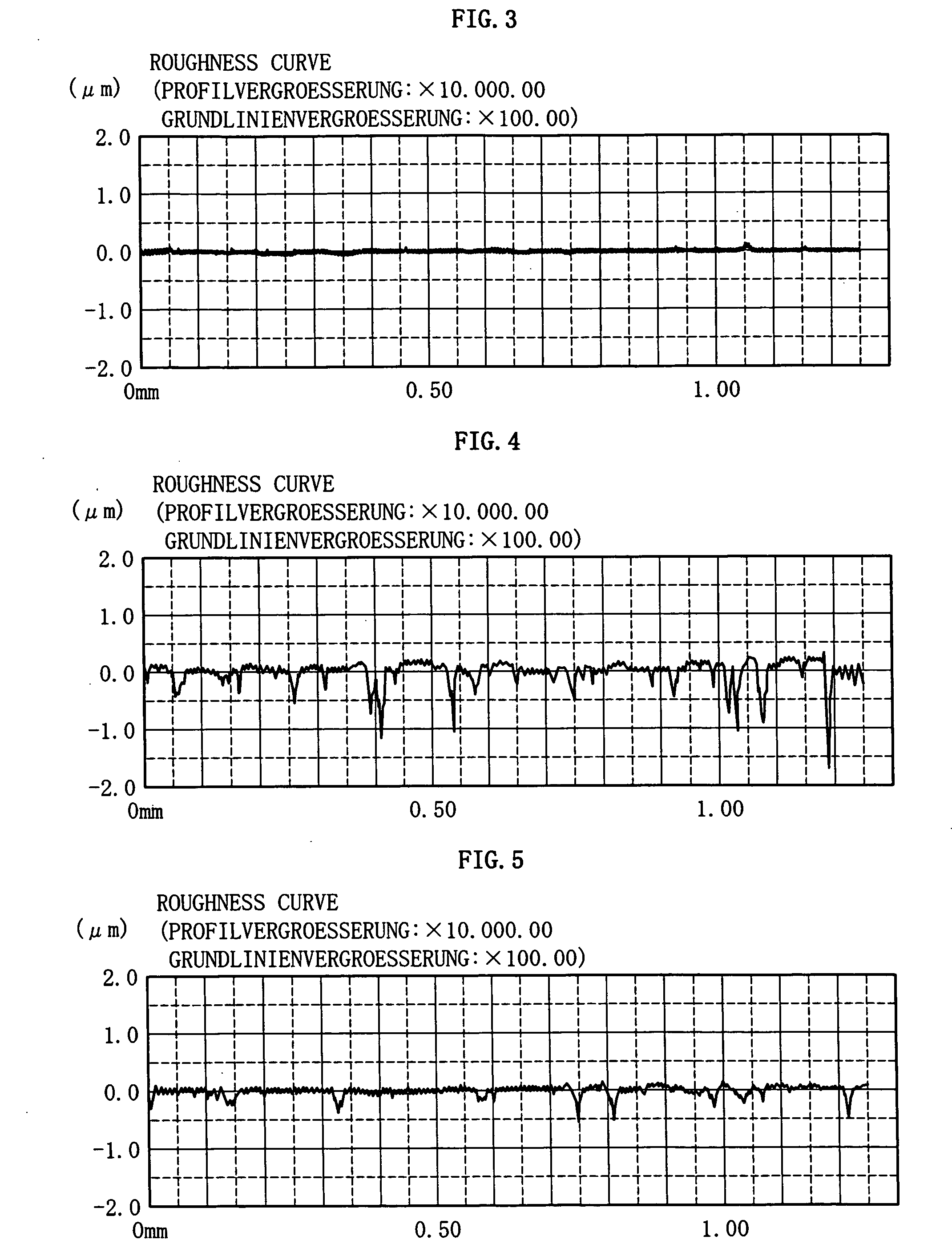Rolling Bearing
- Summary
- Abstract
- Description
- Claims
- Application Information
AI Technical Summary
Benefits of technology
Problems solved by technology
Method used
Image
Examples
example 1
[0069]By using a JIS standard SUJ2 material (1.0 mass percent C—0.25 mass percent Si—0.4 mass percent Mn—1.5 mass percent Cr), the following tests were conducted, that is, (1) hydrogen amount measurement, (2) grain size measurement, (3) Charpy impact test, (4) breaking stress value measurement, and (5) rolling fatigue test. Table 1 shows results of those.
TABLE 4ConventionalcarbonitridingNormalSampleABCDEFtreatmentquenchingSecondary quenching780800815830850870——temperature (° C.)Hydrogen amount (ppm)—0.370.480.380.420.400.720.33Grain size (JIS)—1211.51130151010Charpy impact value—6.655.456.306.206.305.336.70(J / cm2)Breaking stress value—2840278025502850270023302770(MPa)Rolling fatigue life—5.44.23.52.92.83.11ratio (Lm)
[0070]Production history of each of the samples is described below.
[0071]The samples A to D (examples of the present invention): Carbonitriding treatment 850° C., and retention time 150 minutes. An atmosphere was given as a mixed gas of RX gas and an ammonia gas. In the ...
example 2
[0109]Next, an example 2 will be described. An X material, a Y material, and a Z material below were subjected to a series of tests. As a heat treatment material, JIS standard SUJ2 material (1.0 mass percent C—0.25 mass percent Si—0.4 mass percent Mn—1.5 mass percent Cr) was used commonly for each of the X to Z materials. Manufacturing histories of the X to Z materials are as follows.[0110]X material (comparative example): Only normal quenching (carbonitriding treatment is not performed).[0111]Y material (comparative example): Quenching was performed after the carbonitriding treatment without any other process (conventional carbonitriding quenching). Carbonitriding treatment temperature 845° C., and retention time 150 minutes. An atmosphere of the carbonitriding treatment was RX gas+ammonia gas.[0112]Z material (example of the present invention): A bearing steel which underwent the heat treatment pattern of FIG. 12. Carbonitriding treatment temperature 845° C., and the retention tim...
example 3
[0128]Table 11 shows results of a test conducted for a relationship between the nitrogen content and the rolling life under a condition of foreign matter incorporation. In this test, the tapered roller bearing shown in FIG. 8 is used. In examples 1 to 5, all the outer race 13, the inner race 14, and the tapered rollers 16 are manufactured while being applying with the heat treatment pattern shown in FIG. 12. Further, on the surface of the tapered roller, the innumerable minute concave recesses shown in Table 1 and Table 2 are randomly formed. Note that, a comparative example 1 is a normal quenched product, and a comparative example 2 is a normal carbonitrided product. A comparative example 3 shows a case where there is an excess of only a nitrogen amount although the same treatment as that of the examples of the present invention is applied. Test results are as follows.[0129]Test bearing: Tapered roller bearing 30206 (inner / outer races and rollers are made of high-carbon chromium be...
PUM
 Login to View More
Login to View More Abstract
Description
Claims
Application Information
 Login to View More
Login to View More - R&D
- Intellectual Property
- Life Sciences
- Materials
- Tech Scout
- Unparalleled Data Quality
- Higher Quality Content
- 60% Fewer Hallucinations
Browse by: Latest US Patents, China's latest patents, Technical Efficacy Thesaurus, Application Domain, Technology Topic, Popular Technical Reports.
© 2025 PatSnap. All rights reserved.Legal|Privacy policy|Modern Slavery Act Transparency Statement|Sitemap|About US| Contact US: help@patsnap.com



